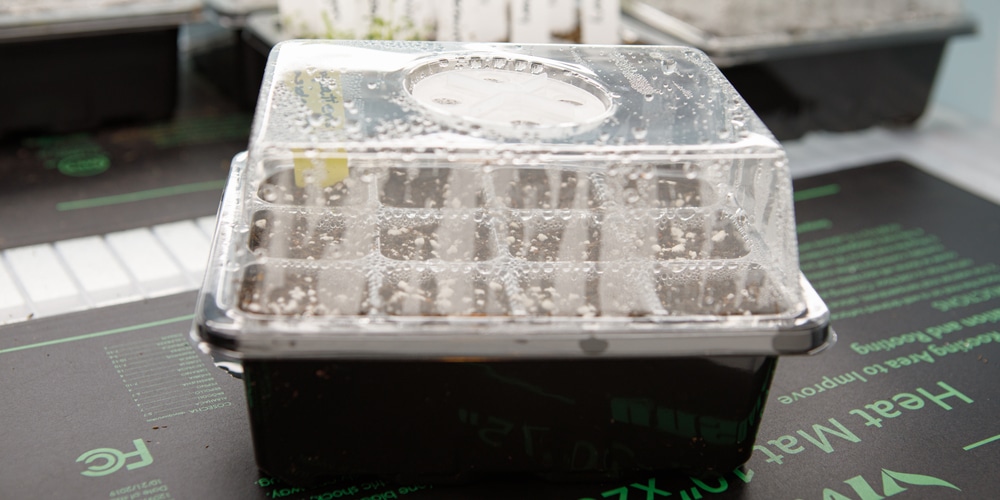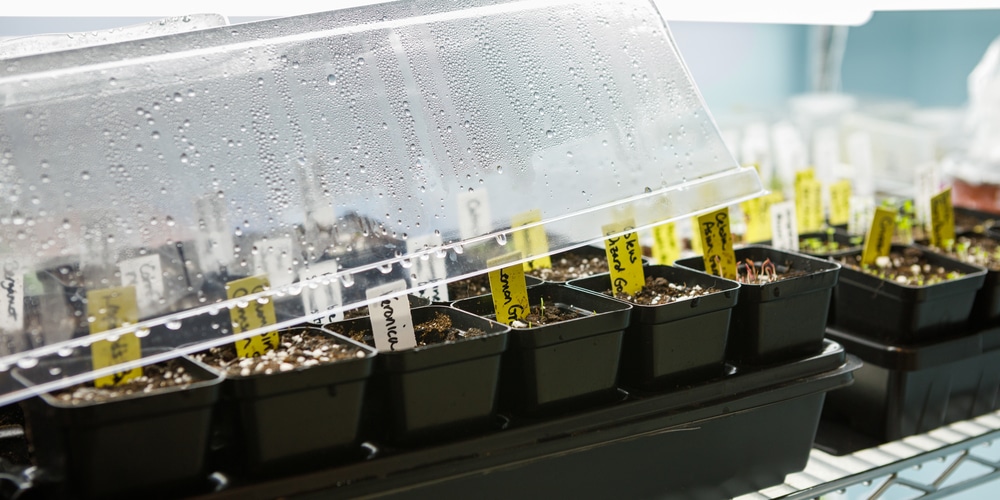Gardening in the summertime can be a sweaty, sticky experience, especially if you’re trying to keep your plants healthy and hydrated. Humidity plays a big role in the health of your plants, and if the air is too dry, your plants can suffer.
While not all plants need high humidity to thrive, many do, which is why gardeners often turn to humidity domes.
What is a Humidity Dome?
A humidity dome is a clear, plastic cover that helps to create a moist environment for seedlings and cuttings.
The dome traps moisture and humidity inside, creating a mini-greenhouse effect that is ideal for young plants. The dome also protects plants from drafts and sudden temperature changes.
It is important to vent the dome regularly to prevent the build-up of condensation, which can lead to fungal growth. When used properly, a humidity dome can be an invaluable tool for starting new plants.
Moreover, a humidity dome allows you to control the amount of water your plants are receiving. Too much water can lead to root rot, while too little water will cause the plant to wilt and dry out.
By using a humidity dome, you can ensure that your plants get just the right amount of moisture.
Does a Humidity Dome Need Holes?
The concept of using a humidity dome is simple. It traps moisture and humidity around your plants, creating a humid microclimate. The question is, do they need holes?
Generally speaking, humidity domes do not necessarily need to have holes for them to function properly. The primary purpose of the dome is to trap moisture and humidity. However, there are some cases where gardeners drill holes or slits in the dome to allow minimal ventilation.
If you live in a particularly humid climate or are starting plants that require high humidity, you may want to consider drilling holes or slits in your humidity dome. This will allow some of the excess moisture to escape, preventing the build-up of condensation and fungal growth.
On the other hand, if you live in a dry climate or are starting plants that do not require high humidity, you may want to forego holes altogether. This will create a more sealed environment, which can benefit your plants.
Those in USDA zones nine and above may want to consider using a humidity dome with holes, while gardeners in drier climates can get away with a solid dome.
Plants Requiring Humidity Domes
There are a number of plants that benefit from being started in a humidity dome. Some of these include:
- Ferms
- Cacti
- Orchids
- African violets
- Begonias
Generally speaking, various factors are to be taken into consideration when starting plants in a humidity dome. These include the climate, the type of plant, and the amount of moisture required.
If you are starting any of these plants from seed or trying to propagate them through cuttings, a humidity dome can be a valuable tool. The dome will help to create the humid environment that these plants need to thrive.
Does a humidity dome need holes: Final Thoughts
Strictly speaking, humidity domes do not need holes to function properly. Ultimately, the decision of whether or not to drill holes in your humidity dome is up to you. There are benefits and drawbacks to both approaches. Experiment and see what works best for you and your plants.
One can purchase a humidity dome at most gardening stores or online. They come in a variety of sizes, so be sure to choose one that is appropriate for the number and size of your plants.
You may also like: How to Store a Weed Eater the Right Way


